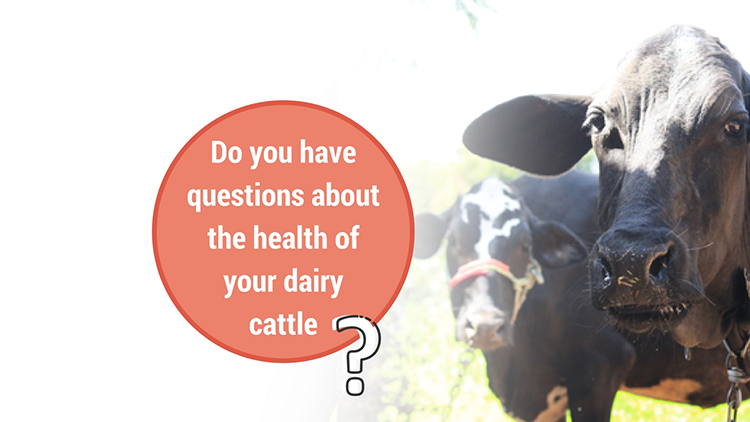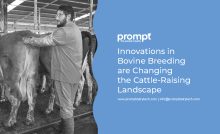Frequently Asked Questions: Reproductive Health Management of Dairy Cattle


The women in Shivpura village of Banaskantha district have become the talk of the town for their unwavering contribution to the dairy industry. These women are becoming the economic backbone of the dairy industry apart from juggling the responsibilities towards their families. Even during challenging times when they haven’t earned significant output from agriculture, they can still live pleasingly on the profits yielded from dairy business. Shivpura is a backward village with meagre facilities and resources, but still, the women here happen to be the breadwinner of the family. These women are actively contributing to the growth of the dairy industry and their village which has caught people’s attention.
The state of reproductive health of your dairy cattle determines the productivity and economic output of your dairy farm. Hence, maintaining optimum body condition and reproductive health of your animals holds foremost importance in animal husbandry. A comfortable housing environment, access to plenty of green fodder and a well-balanced concentrate feed along with clean drinking water are the pre-requisites of the same. Besides, dairy herd management software could help you in daily record-keeping of your farm. Here, we answer some frequently asked questions about cattle’s reproductive health management along with some good practices for the same.
What should be done in the event of the retained placenta?
Infection in the reproductive tract and deficiency of calcium in cows’ diet are the chief reasons retention or delayed expulsion of the placenta. Therefore, in the event of the same:
- Milk the cow immediately as the release of oxytocin during milking will help in the removal of placenta.
- Provide oral calcium supplements in the post-partum diet, and give intravenous calcium therapy under vet’s supervision, if needed.
- Cut off the hanging placenta near the vulva using clean scissors, but refrain from either pulling it off or attaching any weight to it. For natural expulsion, add a pinch of potassium permanganate into fresh, cold water and wash off the hind quarter of the cow with it.
- Consult a veterinarian for appropriate treatment of the placenta isn’t removed within 12 hours.
What kind of practices should be followed if the animals experience pre- or post-partum prolapse?
Experiencing pre- or post-partum prolapse in the uterus/vagina during the last trimester of gestation or first few days of calving by some animals is common. The causes could be an injury, infection in the urinary tract/genitalia, or deficiency of calcium. Hence, the following practices should be implemented to treat the same:
- Mix a pinch of potassium permanganate in clean, cold water and wash the prolapsed part with the same followed by application of antiseptic cream like Soframycin.
- Keep the floor and environment clean. Allow the animal to stand for as long as it can.
- Feed the animals four to six times a day rather than twice.
- Oral or intravenous calcium therapy could also be practiced.
In how many days does an animal come in heat and what are its common signs?
A cow/buffalo comes into heat once it hits puberty, and is repeated every 18 to 25 days if it doesn’t conceive. The common visible signs of heat are swelling of the vulva, mucus discharge from vagina, restlessness, decreased feed intake, lowered milk production, and mounting behavior along with bawling and frequent urination. Typically, standing expression of the cow being mounted by the other confirms the occurrence of heat. However, skilled and experienced personnel should be consulted to observe and verify the same. Frequent visual observations and using teaser bulls together can increase the efficiency of heat detection. Visit and read the blog about Artificial Insemination and its benefits to learn more about it.
What practices should be adopted when the animal is in heat?
Follow the below practices once the animal is observed and confirmed to be in heat:
- Observe and note the color of the vaginal discharge. It should be clear and transparent; if it’s yellowish or reddish or whitish, it is an indication of genital infection, and immediate help from a vet should be sought.
- Preserving the time of insemination is crucial as timely insemination increases the chances of conception. If the heat signs appear in the morning, inseminate the animal in the evening. Follow the same procedure if it’s vice versa. A cattle record keeping software might help in maintaining heat records and getting notified about next heat cycle of each animal at your farm
- The period of active heat is 12 to 18 hours normally but may last up to 2 or 3 days in some animals due to hormonal fluctuations. These animals should ideally be ovulated or inseminated twice (morning and evening) vet supervision.
Read More:- Dairy Farming Frequently Asked Questions
How should animals be treated in the case of delayed heat or several failed attempts of insemination?
There are times when the animals do not conceive despite coming into heat or giving multiple inseminations. The common reasons could be infantile genitalia, infection in uterus, anestrus, and repeat breeding. Hence, following practices should be adopted under any of the mentioned scenarios:
- Anestrus may occur due to under-developed (infantile) genitalia or delayed puberty. In such a case, provide balanced concentrate feed containing minerals like calcium and phosphorous along with Vitamin A & D in ample amount. Make sure the animal isn’t exposed to ecto or endoparasites.
- A change in the color of vaginal discharge from transparent to yellowish or reddish indicates the onset of endometritis (infection in the uterus). Hence, the animal must be treated with one or two-cycle dose of antibiotics by the supervising vet until the discharge becomes clear. Later, the animal can be inseminated in the next heat cycle.
- Also, there might be animals that may not reveal visible signs of heat. It may be due to inadequate space availability, feet problems, a bad diet, attack by ecto or endoparasites, etc. However, it can be treated with proper care and management habits.
What care should be taken if premature calving occurs?
Premature calving may be a result of genital infections like Chlamydiosis, Brucellosis, or Trichomoniasis, which can be diagnosed by proper lab tests.
- A veterinarian should immediately be informed and suggested treatment should be followed if any premature birth happens.
- The bull from which semen was taken should be checked and replaced if necessary.
- All the female calves in the herd must be inseminated with Cotton Strain 19 vaccine if the frequency Brucellosis occurs more than often.
Wrap-up
Like what you read? Want to learn more about the best practices for your dairy farm? Check out our Blog page for tips on how to improve your dairy business.
Recent Posts
One Milking Parlour, One Promise: How a Father’s Decision Gave His Daughter the Gift of Time
In the rich, green fields of Punjab, dairy farming is a way of life. Across…
Increase Your Farm’s Profits With Budget-friendly Milking Machines
For several years, dairy farmers have used traditional methods to collect milk from cows. However,…
Innovations in Bovine Breeding are Changing the Cattle-raising Landscape
Animal husbandry is an age-old practice that shaped the country's dietary culture across regions. As…
The Impact of Temperature on Milk Quality: Challenges Faced During Summer
Milk quality is a crucial factor in manufacturing dairy products like ice cream, UHT milk,…
From Corporate to Cattle Management: Shrikant’s Visionary Approach to Dairy Farming
Embarking on a journey that combines tradition with innovation, Shrikant, once an IT engineer, chose…
From Farm To Table: The Journey of Milk in India
The stellar role of Operation Flood since its launch played an integral part in making…


